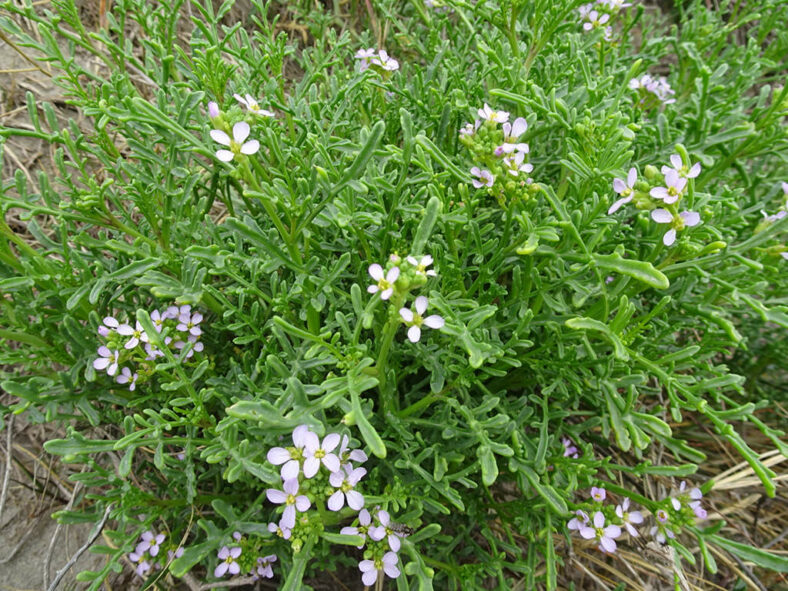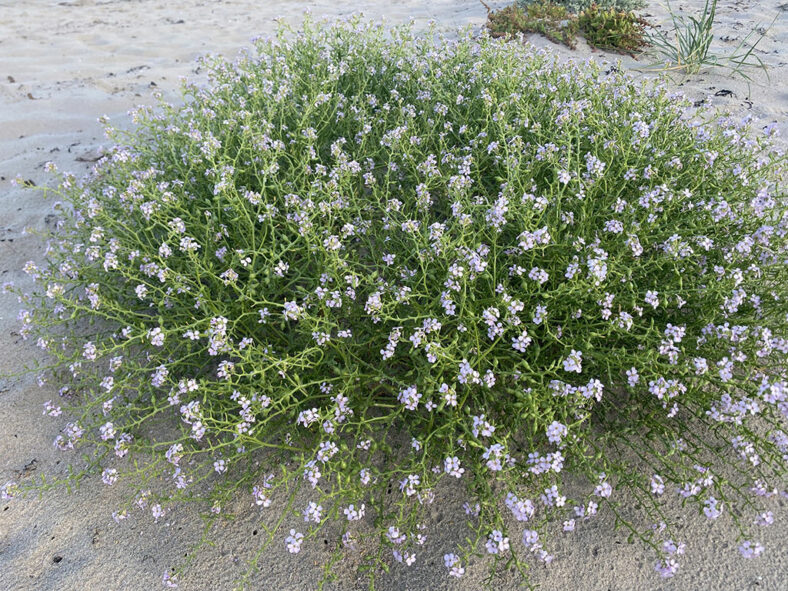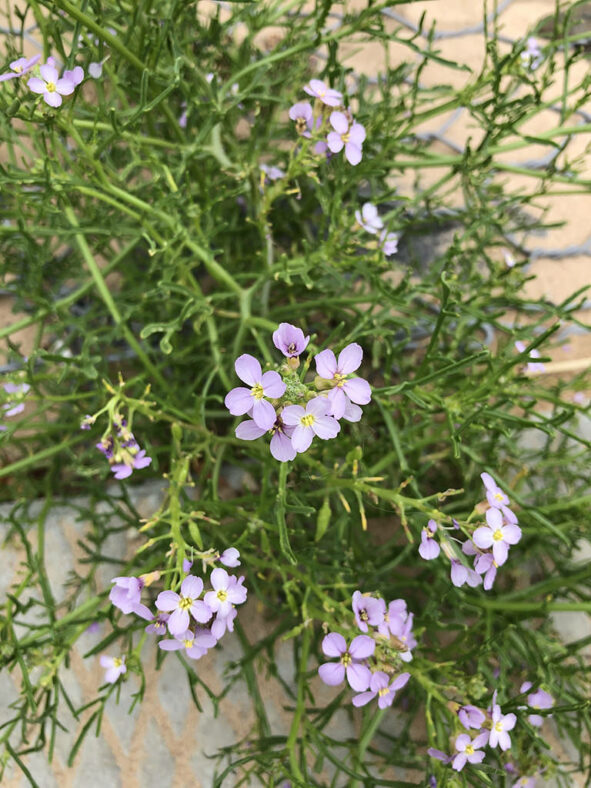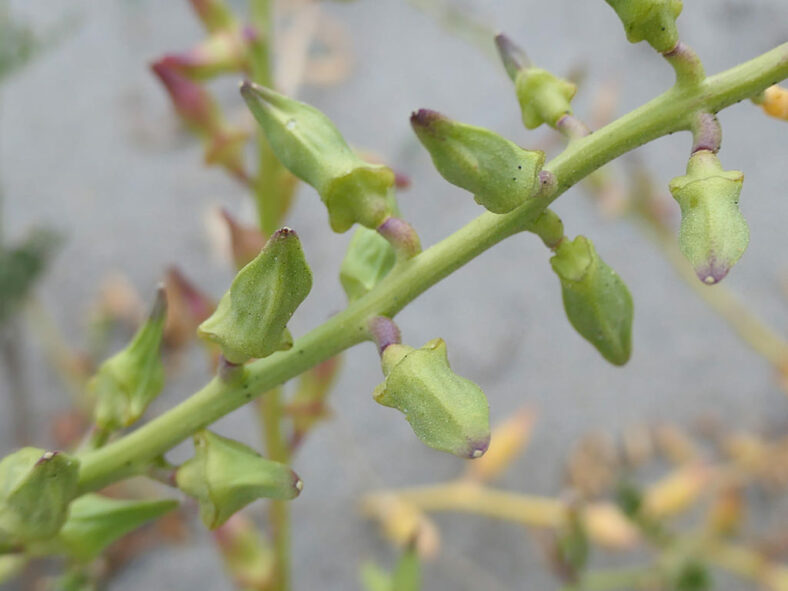Despite its pungent and sometimes bitter taste, Cakile maritima can be eaten raw or cooked. It is also used in traditional medicine for its diuretic, antiscorbutic, appetizing, digestive, and purgative effects.
Scientific Name
Cakile maritima Scop.
Common Name(s)
European Searocket, Sea Rocket, Two-head Sea Rocket
Synonym(s)
Bunias cakile, Cakile cakile, Cakile maritima subsp. maritima, Crucifera cakile, Rapistrum cakile, Rapistrum maritimum
Scientific Classification
Family: Brassicaceae
Tribe: Brassiceae
Genus: Cakile
Etymology
The specific epithet "maritima (muh-RIT-tim-muh)" means "of or pertaining to the sea; marine, maritime" and refers to the habitat of this species.
Origin
Cakile maritima is native to Europe, North Africa, and West Asia. However, it has been introduced to various other parts of the world and can now be found in many different regions.
Description
Cakile maritima is an annual succulent with branched stems and lobed green leaves, often tinted with purple or magenta. The stems can be prostrate or ascending and may reach up to 18 inches (45 cm) in length. They rise from a slender or stout taproot. The leaves are fleshy, alternately spaced on the stem, and can measure up to 2.4 inches (6 cm) long. The lower leaves are stalked and usually deeply divided into pinnate lobes, while the upper ones are unstalked and can be less divided.
During the summer, Cakile maritima produces fragrant flowers with four petals that can be mauve, pinkish, or occasionally almost pure white. The flowers appear in dense clusters on the main stem and branches and can reach up to 1 inch (2.5 cm) in diameter. The pod-like fruits are oblong, green, maturing to brown, and contain two smooth yellow or brown seeds.

Cakile maritima is an annual plant that grows in clumps or mounds on beaches and bluffs. It is tolerant of salt spray and occasional seawater flooding.
This plant is relatively easy to grow in a garden and can self-sow if the spoil is disturbed by hoeing. Cakile maritima thrives in areas that receive plenty of sunlight and well-draining soil.
Cakile maritima has a short life span of about 4 to 5 months and is wholly dependent on its seeds for survival. In the wild, its usual life span is 4 to 5 months. The plant is pollinated by a wide range of insects, and its seeds are often dispersed by floating in seawater.
Links
- Back to genus Cakile
- Succupedia: Browse succulents by Scientific Name, Common Name, Genus, Family, USDA Hardiness Zone, Origin, or cacti by Genus
Photo Gallery
Click on a photo to see a larger version.


